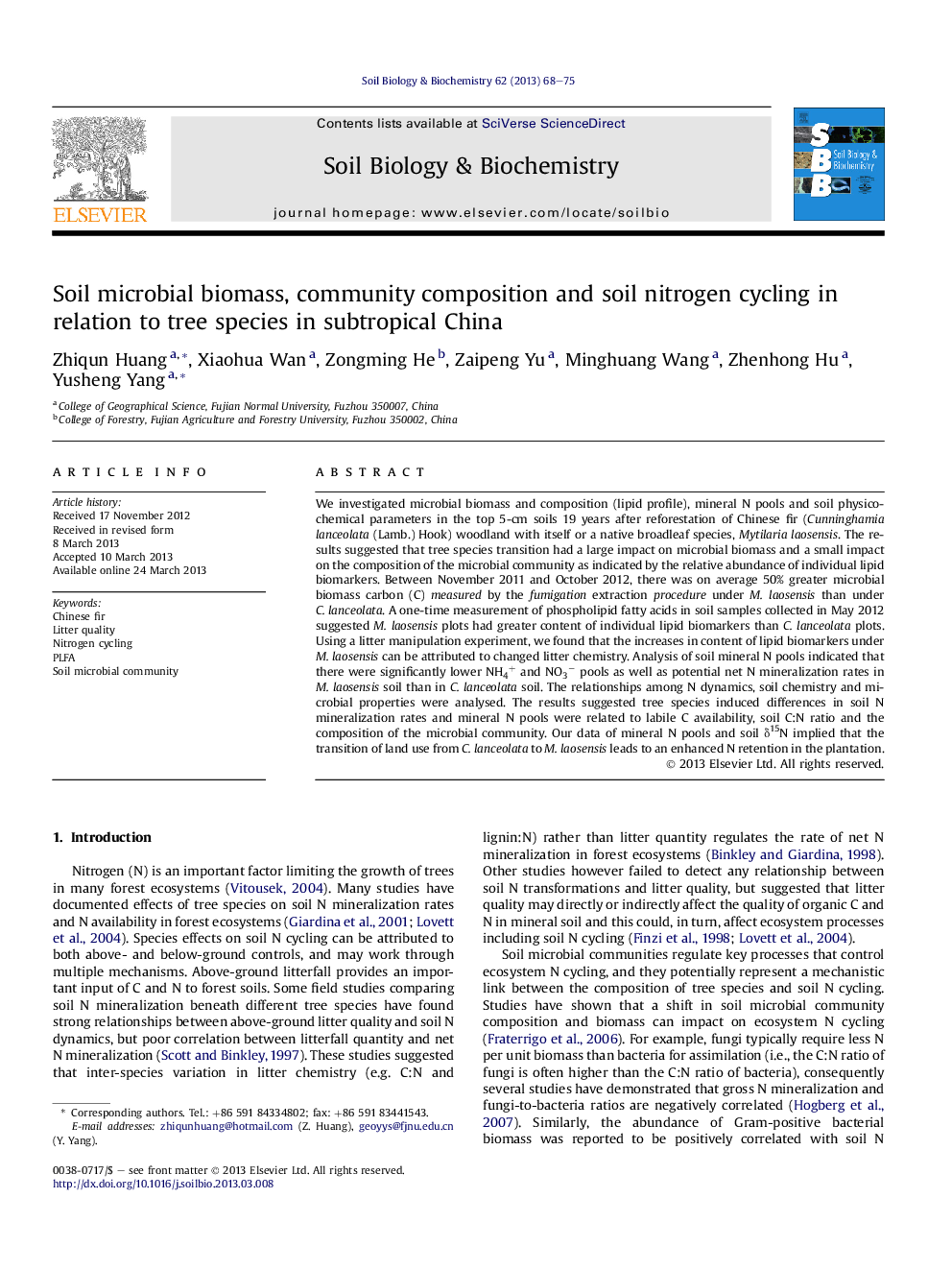| Article ID | Journal | Published Year | Pages | File Type |
|---|---|---|---|---|
| 8365241 | Soil Biology and Biochemistry | 2013 | 8 Pages |
Abstract
We investigated microbial biomass and composition (lipid profile), mineral N pools and soil physicochemical parameters in the top 5-cm soils 19 years after reforestation of Chinese fir (Cunninghamia lanceolata (Lamb.) Hook) woodland with itself or a native broadleaf species, Mytilaria laosensis. The results suggested that tree species transition had a large impact on microbial biomass and a small impact on the composition of the microbial community as indicated by the relative abundance of individual lipid biomarkers. Between November 2011 and October 2012, there was on average 50% greater microbial biomass carbon (C) measured by the fumigation extraction procedure under M. laosensis than under C. lanceolata. A one-time measurement of phospholipid fatty acids in soil samples collected in May 2012 suggested M. laosensis plots had greater content of individual lipid biomarkers than C. lanceolata plots. Using a litter manipulation experiment, we found that the increases in content of lipid biomarkers under M. laosensis can be attributed to changed litter chemistry. Analysis of soil mineral N pools indicated that there were significantly lower NH4+ and NO3â pools as well as potential net N mineralization rates in M. laosensis soil than in C. lanceolata soil. The relationships among N dynamics, soil chemistry and microbial properties were analysed. The results suggested tree species induced differences in soil N mineralization rates and mineral N pools were related to labile C availability, soil C:N ratio and the composition of the microbial community. Our data of mineral N pools and soil δ15N implied that the transition of land use from C. lanceolata to M. laosensis leads to an enhanced N retention in the plantation.
Related Topics
Life Sciences
Agricultural and Biological Sciences
Soil Science
Authors
Zhiqun Huang, Xiaohua Wan, Zongming He, Zaipeng Yu, Minghuang Wang, Zhenhong Hu, Yusheng Yang,
